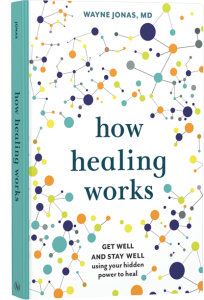When patients with cancer pain ask you about pain management options, what do you say?
It might depend on where you practice. Most people with cancer are treated in community hospitals, in areas where medications are the only options provided, but we now know that non-drug, integrative treatments should be added to the toolbox of solutions . You may ask yourself which integrative treatments are evidence-based, which have more of a “healing ritual” benefit, and which may create financial toxicity for your patient without alleviating their pain. New guidelines are finally available to guide an oncology care team in supporting their patients with an integrative approach to pain that delivers more than medications.
The SIO-ASCO guidelines on cancer pain and integrative medicine
Last September, the Society for Integrative Oncology (SIO) and the American Society for Clinical Oncology (ASCO) released joint guidelines on this topic: Integrative Medicine for Pain Management in Oncology.
The guidelines reflect a review of 227 randomized clinical trials of integrative treatments for cancer pain. The review was conducted by a panel of experts from multiple specialties, including conventional and integrative medicine and nursing.
The reviewers asked which integrative treatments for adults and children with cancer pain were supported by the best evidence. They asked the same question about natural products.
Guideline highlights
The experts were able to make the following moderately strong recommendations based on an intermediate level of evidence:
- Acupuncture to relieve aromatase inhibitor-related joint pain in breast cancer therapy.
- Acupuncture for general or musculoskeletal cancer pain.
- Reflexology or acupressure for pain during systemic therapy.
- Hypnosis to relieve pain during procedures.
- Massage to relieve pain in patients receiving palliative or hospice care.
All these recommendations were for adult populations. The panel did not find sufficient evidence to make pediatric pain management recommendations at this time.
The panel also reviewed evidence for natural products in the integrative treatment of cancer pain. Again, no recommendations could be made for adults or pediatric patients.
I sat down with Dr. Richard T. Lee, a clinical professor at City of Hope Comprehensive Cancer Center who helped develop the ASCO-SIO guidelines, to discuss what these changes mean for both physicians and patients. The interview is available to view here.
Insurance coverage for recommended options
If you would like to recommend the integrative treatments listed above, you may be pleased to find that more and more insurers do cover some types of integrative treatment. Massage and acupuncture for medical treatment may also be allowed expenses if your patient has a flexible spending account for health care.
You may be able to help patients find low-cost or even free options for integrative cancer pain treatment, although it is important to be cautious about the quality of care and recommend choosing a licensed practitioner. Schools of massage and acupuncture may offer low-cost or sliding-fee scale sessions with advanced students, for example.
Another resource is Inova Life with Cancer. This program out of Inova Schar Cancer Institute in Virginia offers free and low-cost services and is a model for the nation. Other similar groups who assist in connecting patients and services across the country are Karuna Precision Wellness and Unite for Her.
More ways to help patients
So, what do you do when a patient asks about using natural products, such as CBD oil, for cancer pain? What if you’d like to try a natural product to relieve another symptom, such as nausea, fatigue, or lack of appetite? You may want to look at the Pocket Guide to Cancer Pain, a free resource we created.
The new SIO-ASCO guidelines cover just one aspect of integrative cancer treatment. The ASCO offers some additional information on integrative treatments, including how to evaluate therapies.
Patient resources for integrative health and cancer
Resources for Cancer Care at the How We Heal Campaign, covering many aspects of integrative health and living with cancer.
Helping patients find an integrative health provider
6 Things to Know When Selecting a Complementary Health Practitioner, from the NIH National Center for Complementary and Integrative Health.
Insurance and paying for treatment
Will My Insurance Cover Complementary and Integrative Therapies? From the American Cancer Society.

Take Your Health Into Your Own Hands
Drawing on 40 years of research and patient care, Dr. Wayne Jonas explains how 80 percent of healing occurs organically and how to activate the healing process.

